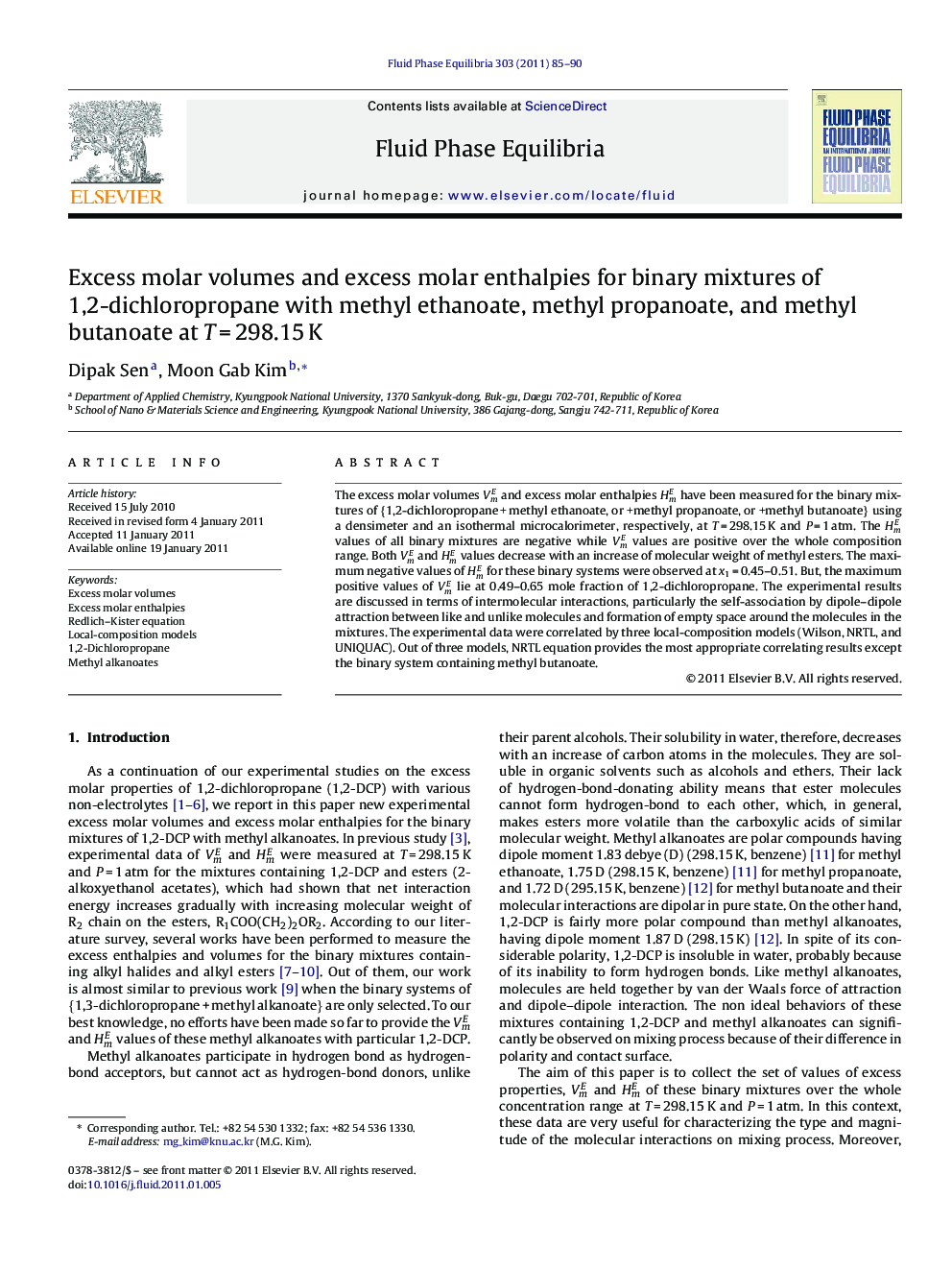| Article ID | Journal | Published Year | Pages | File Type |
|---|---|---|---|---|
| 202520 | Fluid Phase Equilibria | 2011 | 6 Pages |
The excess molar volumes VmE and excess molar enthalpies HmE have been measured for the binary mixtures of {1,2-dichloropropane + methyl ethanoate, or +methyl propanoate, or +methyl butanoate} using a densimeter and an isothermal microcalorimeter, respectively, at T = 298.15 K and P = 1 atm. The HmE values of all binary mixtures are negative while VmE values are positive over the whole composition range. Both VmE and HmE values decrease with an increase of molecular weight of methyl esters. The maximum negative values of HmE for these binary systems were observed at x1 = 0.45–0.51. But, the maximum positive values of VmE lie at 0.49–0.65 mole fraction of 1,2-dichloropropane. The experimental results are discussed in terms of intermolecular interactions, particularly the self-association by dipole–dipole attraction between like and unlike molecules and formation of empty space around the molecules in the mixtures. The experimental data were correlated by three local-composition models (Wilson, NRTL, and UNIQUAC). Out of three models, NRTL equation provides the most appropriate correlating results except the binary system containing methyl butanoate.
Research highlights▶ VmE and HmE for binary mixtures of {1,2-DCP + methyl alkanoates} were measured. ▶ HmE of all binary mixtures is negative while VmE is positive over whole xi range. ▶ Both VmE and HmE decrease with an increase of molecular weight of methyl esters. ▶ Results were correlated by local-composition models (Wilson, NRTL and UNIQUAC).
